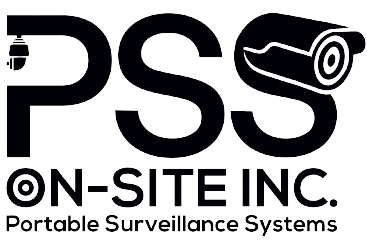In a world increasingly aware of security challenges, businesses are prioritizing robust surveillance measures. Ensuring safety and preventing loss have become paramount, with security camera systems playing a pivotal role in this dynamic.
Evolution of Surveillance Technology
From grainy black-and-white footage to high-definition digital recordings, surveillance technology has evolved remarkably. Modern systems offer a suite of advanced features that were once the stuff of science fiction, providing businesses with unparalleled security capabilities.
The Necessity of Business Security Cameras
Deter Crime and Theft
Security cameras are a powerful deterrent against criminal activities. The mere presence of cameras can discourage potential thieves, significantly reducing the risk of theft and vandalism.
Ensure Employee Safety
Beyond deterring crime, security cameras are crucial for maintaining a safe working environment. They help monitor employee interactions, prevent workplace violence, and ensure adherence to safety protocols.
Types of Security Camera Systems
Analog vs. Digital Cameras
Analog cameras, while traditional, are gradually being overshadowed by their digital counterparts. Digital cameras offer superior image quality and enhanced functionality, making them a preferred choice for modern businesses.
IP Cameras and Network Solutions
IP (Internet Protocol) cameras are at the forefront of contemporary surveillance technology. These cameras connect to a network, allowing for remote viewing and control, thus offering greater flexibility and scalability.
Key Features to Look For
Resolution and Image Quality
High-resolution cameras capture detailed images, making it easier to identify individuals and activities. Look for cameras with at least 1080p resolution for optimal clarity.
Night Vision Capabilities
Effective surveillance doesn’t stop when the sun goes down. Night vision capabilities are essential for continuous monitoring, ensuring that low-light conditions do not compromise security.
Motion Detection and Alerts
Cameras equipped with motion detection can alert business owners to unusual activities in real time. This feature minimizes the need for constant monitoring and enhances the responsiveness to potential threats.
Installation and Placement Strategies
Indoor vs. Outdoor Cameras
Choosing the right camera type for different environments is crucial. Outdoor cameras must withstand harsh weather conditions, while indoor cameras focus on areas like entrances, hallways, and key operational zones.
Strategic Placement for Maximum Coverage
Placing cameras strategically ensures comprehensive coverage. High-traffic areas, entry and exit points, and vulnerable spots should be prioritized to maximize security.
Integrating Security Cameras with Other Systems
Alarm and Access Control Systems
Integrating security cameras with alarm systems and access controls enhances overall security. This synergy allows for automated responses to breaches, such as locking doors or sounding alarms.
Smart Technology Integration
The rise of smart technology offers exciting possibilities for surveillance. Cameras can now integrate with smart home systems, providing seamless control and advanced functionalities like facial recognition and automated alerts.
Data Storage and Management
Cloud Storage vs. Local Storage
Choosing between cloud and local storage depends on specific needs. Cloud storage offers remote access and scalability, while local storage provides more control and faster retrieval times.
Data Encryption and Privacy Concerns
With the increased use of digital storage, data encryption becomes vital. Ensuring that video footage is encrypted protects against unauthorized access and complies with privacy regulations.
Legal and Ethical Considerations
Compliance with Privacy Laws
Businesses must navigate a complex landscape of privacy laws to ensure compliance. Understanding regulations around surveillance and respecting individuals’ privacy rights is essential to avoid legal repercussions.
Ethical Use of Surveillance
Beyond legal compliance, ethical considerations must guide the use of security cameras. Transparency with employees and customers about surveillance practices fosters trust and ethical responsibility.
Cost Considerations and Budgeting
Initial Investment vs. Long-Term Savings
While the initial investment in security cameras can be substantial, the long-term savings from reduced theft, liability, and insurance costs can be significant. Weighing these factors helps in making an informed decision.
Choosing a Cost-Effective Solution
Finding a balance between cost and functionality is key. Businesses should assess their specific needs and budget constraints to choose a solution that offers the best value without compromising security.
Future Trends in Business Security Cameras
Artificial Intelligence and Machine Learning
AI and machine learning are revolutionizing surveillance. These technologies enable features like facial recognition, predictive analytics, and anomaly detection, making security systems smarter and more efficient.
The Impact of 5G on Surveillance
The advent of 5G technology promises to transform surveillance with faster data transmission and improved connectivity. This will enhance the capabilities of security cameras, enabling real-time, high-definition video streaming and more robust remote access.
Conclusion
Business security camera systems are indispensable tools in the modern security arsenal. By understanding the various types, features, and considerations, businesses can implement effective surveillance strategies that protect assets, ensure safety, and comply with legal and ethical standards. With ongoing advancements in technology, the future of business security promises even greater innovation and efficiency.
For More Great Updates, Keep Visiting Pssonsite.
